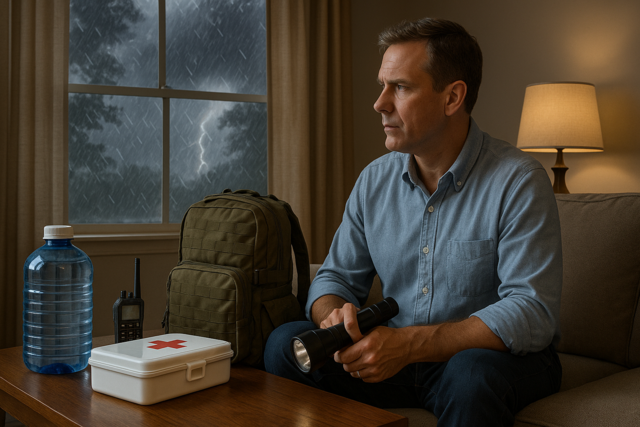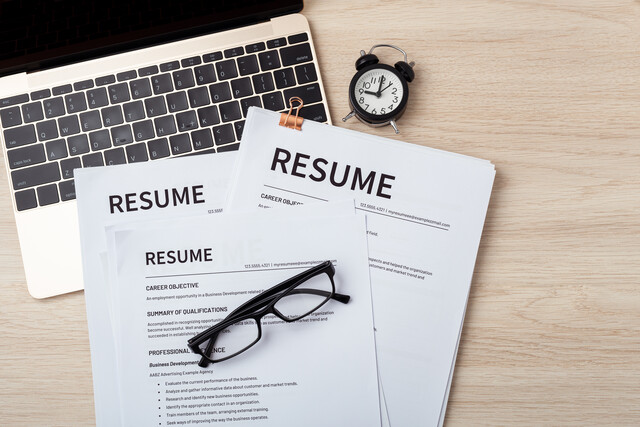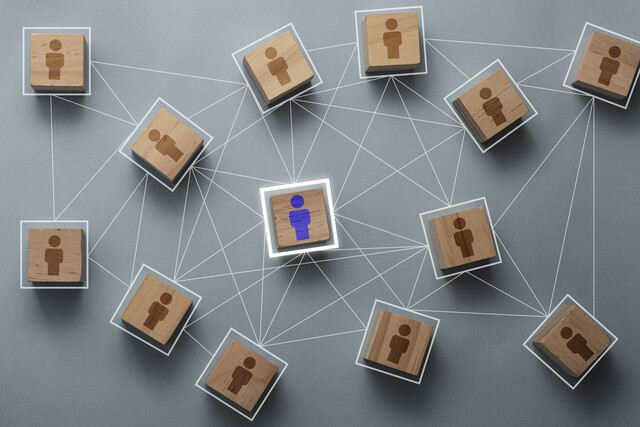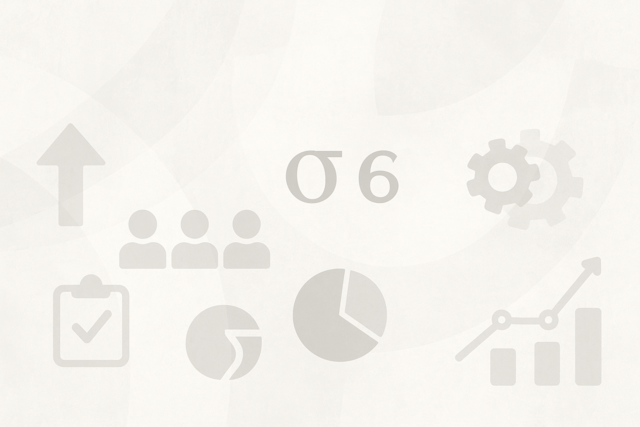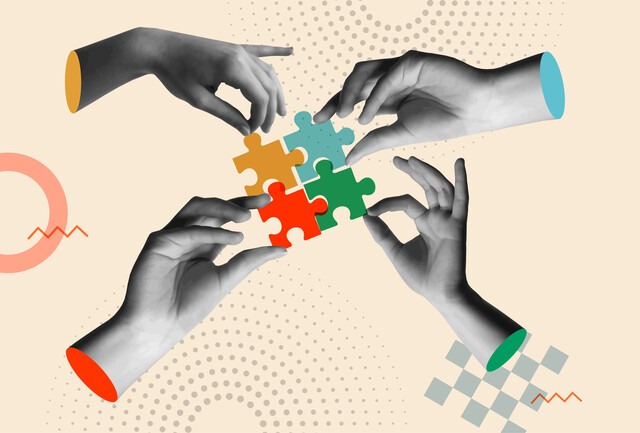Once you've obtained your first personal assistant job, you'll want to ensure you arrive as prepared as possible for your first day at work. Our "tools of the trade" articles will help ready you for not only your first day, but a successful career. We'll discuss "non-technology" tools in this article; technological tools in the next.
The Personal Assistant's "Tool Kit"
You may be wondering why a personal assistant, who certainly has access to whatever he or she may need during the day, would need a "tool kit" beyond a few simple items one might normally carry when away from home. However, since the workday of a personal assistant is always changing, there is no guarantee of being able to fulfill personal needs during the day, unless you bring your own supplies.
Your tool kit should include anything you would normally bring with you when leaving the house for several hours; hair brush or comb, breath mints or gum, bottled water, snacks, facial tissues. All of these items should be included in your tool kit.
The kit should also contain a notebook or paper and writing instrument, as well as your cell phone charger and any other electronics chargers you need. If you have a car adapter and a USB cable with multiple adapters, which provides you with multiple options while helping keep the number of things in your tool kit down to a manageable amount. Depending on your "typical" daily routine, you might want to carry a few travel-sized office supplies � a mini-stapler, a small roll of tape, miniature fold-up scissors, and a few paper clips.
Stocking your tool kit with extra food and water is strongly suggested � you very well may wind up working a 14-hour day, with no time to make a snack in the boss's kitchen or take a quick trip through a fast-food drive-thru. Extremely perishable food, particularly dishes made with mayonnaise, should be avoided, as the possibility of spoilage is high. The last thing a busy PA needs is a case of food poisoning!
It is also a good idea to include a few lesser-used, but helpful, items in your kit. The plethora of travel-sized or single-use items available for purchase makes it easy to include these things in your basic tool bag. Hand lotion is always good to have, as are first-aid items, like adhesive bandages, sterilizing wipes, and some type of healing ointment. Imagine getting a cut on your hand while running errands and bleeding on your employer's expensive car upholstery. Or worse yet, causing yourself discomfort or an infection from aggravating the unprotected wound.
First-aid supplies can also help you "save the day" should your employer, their children, or their associates have minor injuries during a day trip. Such supplies don't take up much room in your tool bag, either. In fact, there are handbag-sized first aid kits, which include not only the supplies mentioned above, but a few cotton swabs, gauze patches, and aspirin or other pain reliever as well. If you opt to build your own miniature first aid kit, we suggest including the items just mentioned. Bear in mind any allergies your employer has when packing pain relieving medication. Women should carry feminine hygiene supplies, just in case.
Speaking of medication, if you take regular prescription medications, make sure you carry a dosage or two with you at all times, in case of extended hours or unexpected travel.
Other sundries you'd be well advised to carry are hand wipes, disinfectant wipes, hair clips or ties, a nail file, a laundry "stain stick" for emergencies, a small tube of super glue, and an emergency sewing kit. All of these items, particularly the sewing kit, can not only come in quite handy, but help make you a superstar with your boss when you use it to perform an emergency repair.
Other small items that come in handy are safety pins, antacids, and over-the-counter allergy medications. Allergy tablets containing diphenhydramine are particularly useful, as they can also help stop allergic (histamine) reactions. Some familiar causes of histamine reactions are MSG, jellyfish stings, and bee stings.
Speaking of your boss's needs, your tool kit is a great place to stash a few "secret arsenal" items unique to your employer. If your boss wears glasses, a small, inexpensive eyeglass repair kit fits easily into your bag and allows your boss to "see" how well you pay attention to his needs.
If your mind is reeling from the thought of all those tiny objects in a tool bag, never fear, there is a solution. Most of us have at least one or two items hanging around the house which would serve well as holders for our groupings of supplies. Cosmetic or toiletry travel cases are excellent for this purpose. It is advisable to avoid using plastic or paper bags for grouped items; not only do they fall apart quickly, they look sloppy and cheap.
Another item you may want to consider for larger and infrequently-used items is a backup bag. You should limit this bag to a reasonable size, as well. The backup bag can "live" in the trunk of the car if you drive frequently, and can be kept in your personal vehicle when you're with your employer at their home or place of business. Unlike your tool kit, t's not something you need right at hand and in the way, but it does need to be accessible.
As you get to know your employer's most frequent contacts and closest associates, you can make minor additions to your tool kit if you like, but don't go overboard! It is possible to be overly prepared. If you have too many "helpful" objects in your tool kit, you'll wind up confused, frustrated, and disorganized. Besides, who wants to drag around an enormous tool kit (and a large backup bag!) everywhere they go? Your best plan of action is to choose items you feel would be most useful and build from there as you familiarize yourself with your employer and their needs.
If the person you're working for has allergies, special dietary needs, or daily medication needs, you would do well to not only familiarize yourself with these conditions, but take steps to plan ahead for possible emergencies related to these condition(s). If your boss suffers from asthma, for example, they may require you to carry a backup inhaler or other appropriate medication in case of emergency. Your employer may request reminders for taking medication as part of your duties, but do not suggest this.
In addition to these items, you may want to include grooming supplies like a toothbrush, a small tube of toothpaste, and deodorant. Your overflow bag is a good place to store such items, and in fact you may wish to pack a set of pajamas, a change of clothing (including socks and underwear), and slippers or other footwear as well. We suggest you learn about your duties prior to packing an extensive overflow bag as it may not be necessary for your particular situation.
As for the tool bag itself, choose a bag which suits your needs, your style, your working environment, and the total group of items you wish to put into your kit. You needn't choose an overly-formal briefcase or bag (in fact, we don't recommend a brief case, as it's typically too unyielding and narrow for this task), nor need the bag be designer or expensive. It should, however, be appropriate to your circumstances. It's likely not many people will see your tool kit, but it should look clean and neat. This also applies to an overflow bag, should you choose to have one.
You'll want a bag large enough to hold everything, with a bit of "wiggle" room. If the contents fit in the bag too tightly, you may have difficulty finding, removing, and replacing items into the bag, which is frustrating and time-consuming. At the same time, you don't want too much extra room, which may lead to the bag becoming disorganized and/or overstuffed. Depending on the contents you've decided to include, you may want a bag with partitions or pockets. When deciding on a tool bag, we suggest you gather your tool kit contents together in order to give yourself a more accurate idea of the size and type of bag that will best suit your needs.
Other Tools of the Trade
Not all PA tools are objects. Observation is an excellent personal assistant tool. By merely paying attention to your employer, you'll learn their likes and dislikes, as well as any needs they need met. For example, does your boss seem to skip lunch, then become nauseous and lightheaded around 2 p.m.? He may be hypoglycemic (low blood sugar). A wise, observant personal assistant might avoid disturbing the boss when they're clearly irritated. This advice also goes for moody bosses.
Depending upon your relationship, you may be able to offer more "personal" solutions to problems of discontent or bodily needs. For a boss with blood sugar issues, you might begin offering him snacks and meals at appropriate times (without disturbing his work, of course) in order to prevent blood sugar crashes. This not only helps your employer work more effectively, it shows you are fully engaged in your career and in your boss's well-being.
Preparation and Experience
There's a tool bag you can begin working on as soon as you decide on your career path; since you'll need to be a "Jack/Jill of all trades," there are many classes, seminars, and other learning opportunities a PA can take advantage of.
Any type of office support, administrative support, or technology classes/seminars are a good place to start. Word processing skills (including proper spelling, grammar, and punctuation) are very important to have, particularly since part of the job description for a typical PA position includes correspondence. If your e-mail writing style sounds idiotic, it reflects badly on both you and your boss.
Even if you can't afford the latest technology for yourself, your future (or current) wealthy employer can, and you'll most likely be using it � and probably teaching your boss how to use it, too, so attending technology fairs (which are sometimes free to attend) and checking out the latest software and apps can be very beneficial to your PA career.
Courses in household or estate management, business etiquette, party planning, and professional shopping are also worthwhile. Many courses can be found not only online, but through your local community college and/or adult education program, as well. The fees for such classes are usually quite reasonable, and some of the classes are very short-term, lasting only a few weeks or even just one day.
You'll also want to practice crafting a professional resume. There are plenty of online resume-building tools online to help with formatting; in this article, we will talk about content.
Resume Content
The entire point of a resume is to provide what is, in most cases, your introduction to a prospective employer or their emissary. There are a few standard "do's and don'ts" for resume writing that apply.
-
Keep it short and simple. � It's tempting to write rambling paragraphs about every job you've ever had, complete with minute details (such as "filed receipts"), especially if you've only had one or two (or zero!) jobs prior to now. Stick to relevant information, using brief, clear sentences or comments to accurately describe your duties. If at all possible, keep your resume one page in length.
-
Stick to classic fonts and sizes. - Choose an easy-to-read font, such as Arial or Times New Roman, preferably 12 pt, for the body of your resume. You can use slightly larger and/or smaller fonts for emphasis in areas such as your name and contact information. Some resume templates used mixed (yet professional) fonts; these are also acceptable. Avoid ornate fonts or very small print; it can make your resume difficult to read
-
Don't "over-embellish." � While you want to show your skills in their best light, it is inadvisable to "invent" duties you did not perform. For example, do not say you supervised a group of 20 people if you only supervised one person. Not only is it an unfair exaggeration, it sets you up for future failure in your new job if you're suddenly asked to lead a team of 15 people, which should be well within your experience, and you panic and blow it.
-
Check and double-check for errors. � This cannot be stressed enough! Spellings, grammatical, and punctuation mistakes, even small ones, guarantee your resume will hit the garbage, unread. There have been cases where people have misspelled their own names or left off their contact information! Errors like this are easier to make than you might imagine. Misplaced apostrophes and typing errors (typing "he" instead of "the," for example) are some of the most common mistakes.
-
Leave out irrelevant information. � If one of your administrative jobs required you to empty the trash each night before going home, you can leave that off your resume -- particularly if you don't want to take out the trash in future jobs!
Experience can be gained by holding jobs in fields like executive support, computer/tech support, and party planning.
Getting your first PA Job
Word of mouth is a powerful tool, and today we have social media tools galore to assist us with getting the word out. Use these tools to your advantage (it's also good training for you!) and let everyone know about your chosen career path.
If working for a celebrity client is your goal, we suggest you choose a particular celebrity "field," such as sports or Top 40 musicians, and do some research on where your "target employers" live. You can then either "go where the action is," or narrow your search to local celebs. Celebrities of all types have homes in remote locations or small towns, so it is possible to find celebrities looking for help almost anywhere.
Tools of the Trade part two: Technology
When we say "technology," what comes instantly to mind? Most likely, you're thinking of computers, smart phones, tablets, the Internet, and the like. But the term "technology" means so much more.
Merriam Webster online dictionary defines "technology" as, "the practical application of knowledge, especially in a particular area." So technology includes everything from simple tools like hammers to high-end computers, and many things in between. The most common technology developed to assist with secretarial duties includes shorthand, typewriters, dictation machines, voice mail, and of course, computer technology.
A Brief History of (Secretarial) Technology
The first real technological development benefiting those performing secretarial duties was shorthand, also known as stenography (rapid writing). Although common use of shorthand has decreased, thanks to the ease of use and availability of computerized note-taking, it is still used, especially in court and legal reporting, where it enables the reporter to transcribe every word being said � very important for legal proceedings. Beginning in 1588, with the invention of an English shorthand system by Timothy Bright, shorthand became more common. It evolved during the 17th century to the systems we have today, the most popular of which are Pitman, Gregg, and Speed writing.
Invented in the 1800s was the shorthand machine. Miles Bartholomew made the first successful machine in 1877, and after some improvements, obtained his first patent in 1879. A similar machine is used in court reporting, although some modern court reporters, who are expert typists, might use a laptop or electronic notebook.
The 19th century saw the invention of the typewriter. In 1808, Pellegrino Turri, an Italian man, built a typewriting machine for his friend Countess Carolina Fantoni da Fivizzano, who was blind. Although a sample of letters written on the machine exist, there are no depictions of the machine itself. The typewriter went through many changes, including various keyboard configurations; by 1920 we'd arrived at the standard basic design. Although typewriters seem to be rarely used nowadays, we still use the QWERTY configuration for all keyboards.
Modern PAs have many useful technological tools at their disposal � computers, voice recorders, voice transcription software, even computer tablets, which transfer the handwritten word into a computer document. In fact, your employer may provide you with some of these tools, which will likely be top-of-the-line, and there are apps for just about anything you may need.
Meetings can be held, arrangements made, and shopping done by PAs everywhere via Internet tools such as e-mail, Facebook, and Skype. And all this great technology has its origins in the humble inventions of the past.
USING MODERN TECHNOLOGY TO YOUR ADVANTAGE
The personal assistant is really in charge of two lives � their own and their employer's. If a personal assistant is in a committed relationship, they'll have obligations of a partnership, perhaps including children. All these aspects must be balanced. In a way, a career PA needs their own PA!
As mentioned previously, today's PA has an arsenal of high-tech tools at his or her disposal. It is to your benefit as a PA to research and implement useful technology, including but not limited to, programs, apps, phones, tablets, and laptops. You needn't be an expert, but it is advisable to keep up on current advances in the field of computer technology. You'll benefit not only your employer, but yourself, as well.
The most common, and most important, piece of technology for both you and your boss is a mobile phone. Mobile phones, or cell phones, are a fairly recent invention. Although the first mobile phone prototype was made in 1973, it was an extremely bulky and impractical device, holding a charge worth a paltry 30 minutes of air time. It also took 10 hours to recharge and was exorbitantly expensive. Needless to say, it was not offered commercially.
The first commercial mobile phone went on sale in 1983. Made by Motorola, it still gave users only 30 minutes of air time, but it also had six hours-worth of "standby" time (the phone had to be manually put in "standby" mode to take advantage of this feature). It stored a whopping 30 telephone numbers. Cost? About $4,000.
Mobile phones improved in both technology and design through the mid- to late- 1990s, when the speed also increased. Now the number of people in the world who have cell phones has surpassed the number of those who have flush toilets!
There were also mobile car phones, which surprisingly came earlier than their hand-held cousins � in the 1940s following WWII. These phones required a substantial amount of "behind-the-scenes" technology for them to operate, so hand-held models were impossible.
Most of this operational technology was mounted on the inner body of the car, usually in the trunk. The mount for the handset and the handset, itself were in the vehicle. Antennas were also used to enhance the signal.
Car phones only worked in limited areas, usually along highways and freeways and in highly populated areas. There weren't multiple reception towers to "ping" off of as you traveled. And again, the cost was extremely prohibitive.
In the 21st century, we have phones that are not only very mobile, they're extremely lightweight and designed for the user's hand, which older mobile phone models were not. Mobile phones are seemingly essential for modern life. The average smartphone user unlocks their phone an average of 110 times per day.
For a personal assistant and a busy employer, cell phones are essential. Most individuals now prefer smart phones, which allow a greater amount of storage and a wide variety of functions. Your employer will may arrange a dedicated cell phone for you, with a number only he or she knows and uses, or you may be required to have your own phone and use it for work. You may or may not be reimbursed for the cost of the service. Again, these arrangements vary between employers.
This brings us to apps, which is short for applications. Apps are programs that facilitate quick, secure access to a variety of Internet tools. Available in cyberspace, apps are commonly used on smart phones, tablets, and similar mobile devices. After being downloaded to a mobile media source, the apps will allow the user access to the website associated with the app.
There are apps for calendars, appointment scheduling and arrangement, access to travel sites, shopping -- practically anything you can think of has an app associated with it. We'll go over a few of the most popular apps a little later in this article.
There are several pieces of technology which might be helpful. Tablets are mobile devices, typically between 7 inches and 9 inches. They have all the capabilities of a smart phone, usually save the phone feature itself, plus a larger screen and more memory than a typical smart phone, but with less memory and functionality than a full-blown computer notebook or laptop. Tablets are popular with readers who prefer online books to printed material. A tablet allows the user to access programs more quickly, and utilize a wider variety of apps thanks to the larger screens and more functions.
With so much modern technology to choose from, how does a savvy assistant decide which to choose? Likely, this will depend largely on your employer. You don't want to start deluging your boss with minute questions, especially not constantly, and on your first day of work. Being too helpful, offering too many suggestions, or talking over your boss is a no-no. Being too helpful means having a suggestion, anecdote, or comment for every situation that arises. You won't look smart or helpful � you'll come across as annoying, incompetent, smug, or arrogant. Instead, observe your employer, gauge their needs, see if they're open to trying new things, and present your suggestions in a respectful manner, if appropriate.
Too much of a good thing like technology can be a problem, so make sure you don't overwhelm yourself and your employer by trying to get every little tool out there. With so many choices and new apps, computers, phones, programs, and electronic organizing gadgets coming out every day, it's easy to drown in a sea of information and choices.
Choose carefully and wisely, but limit your options. Studies have shown human beings are really only good at choosing from two or three similar objects. The more choices, the more cognitive distress an individual experiences. If you or your boss is thinking of several issues at once, which is likely; adding more to the mix is not helpful. You'll only frustrate yourself, your boss, and anyone else involved in the decision. There is such a thing as too much of a good thing.
Say, for some reason, you carry three different electronic devices to manage your calendar � one for your pocket, briefcase, or handbag; one for the glove compartment of your vehicle, and one for your home (some people have been known to do this). How will you ensure you won't miss an appointment? Do you log the appointment into each device when you make it? Download all the devices on a computer at home, then reload them? What if the information has not been transferred and one device is lost or broken? It is better, easier, and overall more efficient to assign specific tasks to specific devices, particularly if you carry more than one device.
One solution might be to utilize an online calendar, accessible by all authorized parties; however, some employers, particularly very private people or celebrities, prefer to avoid online programs and/or technology. As a personal assistant, you must be comfortable utilizing the media your employer prefers. In your personal organization, you may choose a more technological approach, but always present information and materials to your employer in their preferred format, not yours.
Never spring surprise, "new and better" methods or tools on your boss. Check with them first prior to making any changes which affect his or her daily operations and routine, or wait for opportune times to suggest new and improved technology/apps. Ensure you've learned how to operate the technology yourself prior to offering it to your boss. You'll be teaching them how to utilize it, and they likely won't have much time or patience for guesswork or frustration.
Using Modern Technology (including VPAs) to Your Advantage
Even though they may sound like a threat to your career, VPAs, or Virtual Personal Assistants (the electronic kind!), can be one of a "live" PAs best tools.
VPAs don't require any special equipment; they are downloadable apps, and many are free. There are several to choose from, for both iOS and android devices. We'll highlight a few of the more popular in this section.
Speech recognition has been around for a while, but as with most "new" technology, it was impractical and prohibitively expensive when Apple introduced it in the 1980s. Also, its capabilities were very limited. An improved speech recognition program came pre-installed in the Macintosh Quadra AV in the 1990s, and Apple later acquired the company developing the original Siri program. Choosing to take it off the market as a software program, it was developed further and is now a pre-installed standard on all iOS (Apple "i" operating system) devices.
If you have an Android phone or tablet, there are several good choices for VPA apps that function in a similar manner to Siri, and most apps have an iOS version, as well. The app 24me is a great help that combines to-do lists, your calendar, and your notes to generate a series of reminders based on data from all these sources. And for the more forgetful (or overly busy!) among us, it also alerts at bill-paying time and synchs with other apps to send birthday greetings.
Speaking of sharing, if you need to share notes or documents frequently, either Quip or Wunderlist could be useful. Quip is a collaborative virtual office, while Wunderlist helps organize ideas and lists and allows you to share these lists with others. This can be useful when organizing a large party or conference where others are involved in the planning or execution of tasks.
One of the more versatile VPA apps is Google Now, touted as the "intelligent personal assistant." It works with iOS and Android, as well as desktop computers, and comes pre-installed on some Android devices. It is available at no cost on the Google Play Store.




